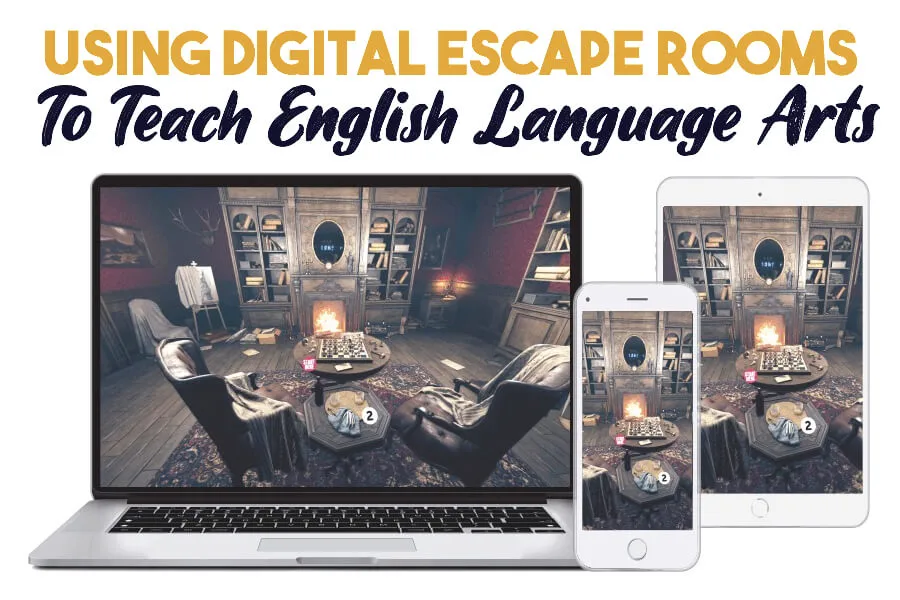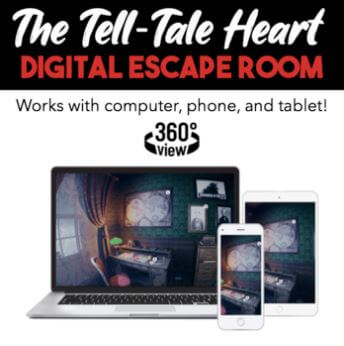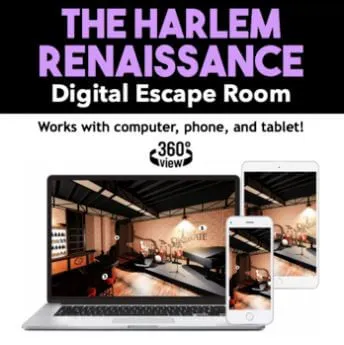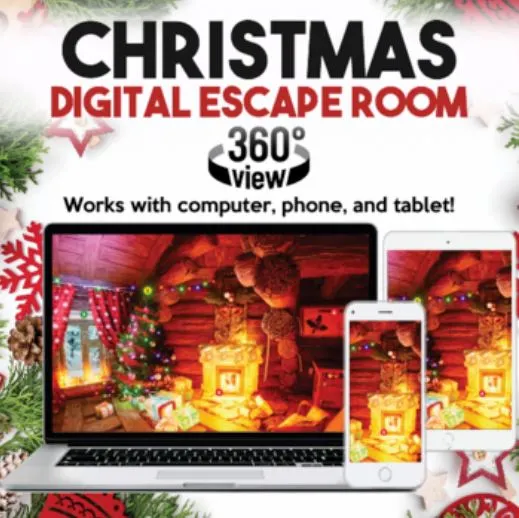Since the spread of coronavirus escalated in 2020, the requirement and desire to “work from home” has become less and less of an anomaly. Undoubtedly, the pandemic has mandated many teachers and educators go digital whether they wanted to or not. However, there were a few upsides to the digital reconstruction in the world of education. One benefit to consider is the innovative ways teachers have adapted their lessons to remain engaging and meaningful in a digital setting, such as the use of digital escape rooms. As an educator myself, I discovered digital escape rooms because of distance learning; yet, I will continue to use these activities in the future—in person—because students find them to be exciting, entertaining, and most importantly: memorable.
What is an escape room?
An escape room is a puzzle or game where a group of participants try to solve a series of clues in order to unlock the door to the room they are “trapped” in. They were created as a wholesome, fun activity for a group of friends to engage in, much like bowling or mini-golfing. Au contraire, participants must work together because if they do not reach their targeted goal within the given time frame, the game is over. It is an adventure-type game where critical thinking and fortitude trump brawn. The problem-solving, team-building aspects of an escape room are what make the game a home run for a classroom activity.
What is a digital escape room?
A digital escape room includes all of the same concepts as a physical escape room, but participants are instead “locked” in a 360° panoramic digital room (similar to what you’d see in a video game) and are solving their clues via laptop, tablet, or smart phone. Some teachers were already transforming their classrooms into escape rooms, but it’s not an easy feat and one that requires hours of planning. With digital escape rooms, there’s much less work for the teacher which makes the experience a more desirable undertaking.
What are the benefits of the digital escape room?
Digital escape rooms require little to no prep work for teachers (if you’re using an escape room that’s already been constructed). Teachers can focus on supervising the class and assisting their students as opposed to building the game themselves from scratch.
Research has told us time and again that students who are highly engaged in a lesson are more likely to stay focused and motivated, resulting in a more meaningful educational experience. Digital escape rooms set students up for academic success because they are interactive, goal-oriented, and promote higher-level critical thinking skills.
Unlike the physical escape rooms, digital escape rooms can be completed individually. This means students can complete the lesson at home if need be. The ability to assign digital escape rooms as a collaborative activity or an individual activity allows teachers to differentiate instruction based on the students’ needs.
How are educators using escape rooms?
Just like the physical escape rooms, digital escape rooms also consist of a specific theme and contain a backstory to hook students. Below are some examples of how educators are using different themed rooms to achieve their desired educational outcomes in the classroom:
To Preview Material: For example, a history teacher could use a digital escape room to introduce what the Harlem Renaissance is and expose students to poetry and art from the time period.
To Review a Text or Topic: A teacher in any discipline could instruct students to review material on a particular topic using a digital escape room prior to a test or exam. Students would use the game as a studying tool, such as an English teacher assigning the short story “The Tell-Tale Heart” in escape room form.
To Reinforce Skills: For example, a math teacher could assign a room that’s theme is all about fractions and decimals. The room would entail fundamental practice to strengthen their knowledge and proficiency.
To Promote Team Building or Develop Social Skills: Using a digital escape room of any theme for any discipline will promote team building as long as students work collaboratively, but you can take it a step further by choosing an escape room with a theme such as growth mindset or empathy.
To Engage in Holiday fun: When you need something to keep your students focused and cooperative during those hectic days before a big break, a digital escape room that’s holiday themed is perfect! For example: a Christmas escape room where students are stuck in a log cabin because they are “snowed in.”
For Substitute Plans: Because of the minimal leg work needed by the educator, a digital escape room is actually an effective activity for students to complete when a teacher is absent. I wouldn’t suggest this option for the first time you are assigning your class a digital escape room, but once your students are familiar with the process, it will make your sub plans incredibly simple.
Remote Learning Snow Day: Now that more and more schools are adopting remote learning days, a digital escape room would be an appropriate option that students would find joy in completing.
How do I assign a digital escape room in the classroom?
To effectively instruct students on how to use a digital escape room, the teacher’s responsibilities include:
- Share the link to the digital escape room with your students.
- Verbally review the rules with your students.
- Set a classroom timer for however long you want.
4. Monitor students to ensure they stay on task.
5. Provide hints to students who are stuck.
6. Have students fill out a reflection sheet.
Why have students fill out a reflection sheet?
Teachers know feedback is essential moving forward after any lesson. Hear what your students have to say! I recommend asking students questions such as:
- What was your favorite part about the escape room?
- What was one problem you encountered in the escape room?
- Was there anything you found too confusing or too difficult to solve?
- Would you like to do more escape rooms in the future?
- Is there anything you would change about the activity today to enhance your experience?
- If you worked in a group, how did all of the group members work together? Did everyone participate? Explain.
Free digital escape rooms for the classroom
Click here to try “The Landlady Digital Escape Room” for free!




